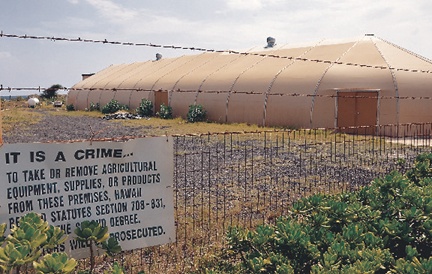KEKAHA — Proposing to discharge up to 30 million gallons of wastewater effluent and treated shrimp remains into the ocean on a daily basis, Sunrise Capital has filed for a Draft National Pollutant Discharge Elimination permit with the state Department
KEKAHA — Proposing to discharge up to 30 million gallons of wastewater effluent and treated shrimp remains into the ocean on a daily basis, Sunrise Capital has filed for a Draft National Pollutant Discharge Elimination permit with the state Department of Health, according to an e-mail from the DOH’s communications office Thursday.
Originally owned and operated by Ceatech USA, the Kekaha shrimp farm was acquired by Sunrise Capital in June 2005 and is currently operating at minimal capacity, said an e-mail from officials at the DOH’s Clean Water Branch.
While this has “resulted in no discharge from the property” since 2004 after the “farm became infected with a shrimp virus,” Sunrise Capital seeks to increase its operating capacity which will likely generate a maximum of 23 million gallons of biological waste each day, according to CWB officials.
Messages left for Sunrise Capital Wednesday and Thursday were not returned.
“The ocean is not a dump,” said environmental activist Dr. Gordon LaBedz of Surfrider Kaua‘i.
Non-coastal shrimp farms can and do exist utilizing alternative methods of waste treatment and disposal, he said Thursday.
When asked if generating fuel from the waste could be a possibility, LaBedz said the amount of discharge would be insufficient to make it economically viable.
“I’m not against the shrimp farm,” said community activist Bruce Pleas.
However, when the farm was operating at full capacity from February 2000 to December 2003, the “disastrous effects” of the waste in the sea were monumental, he said.
The smell was overwhelming, the feces and dead shrimp attracted sharks, the canals were depleted, and it killed every single fish in the area, he said. In addition, the dumping affected surf spots known as Kinikinis, Major’s Bay and Family Housing.
The current can carry the waste which would allow it to “travel miles,” LaBedz said.
“The nutrient levels in the immediate vicinity of the discharge into the receiving ocean waters are expected to be elevated from ambient conditions,” the e-mail from the CWB said. “However, the adjacent coastal ocean area is not expected to have any noticeable effect associated with the shrimp-farm discharge.”
“Water monitoring” which occurred while the shrimp farm was operating at full capacity prior to 2004 “indicated that the discharge from the facility did not affect the water quality of the ocean area,” nor did it impact any adjacent biological communities, the e-mail went on to say.
In addition, Sunrise Capital will reportedly apply “numerous waste-minimization” efforts, according to the CWB. And based upon the “company’s operating history which showed no evidence of negative environmental impact..,” officials at the CWB said they are supportive of the operation’s intent to dispose between 20 million and 30 million gallons of biological waste into the ocean.
To review a copy of the NPDES application, visit http://www.hawaii.gov/health/environmental/water/cleanwater/index.html
One may also acquire a copy at the Kaua‘i District DOH office located at 3040 Umi St. in Lihu‘e.
Comments may be sent no later than April 10 to Clean Water Branch, Environmental Management Division, Department of Health, 919 Ala Moana Blvd., Room 301, Honolulu, Hawai‘i, 96814-4920. Objections and requests for a public hearing should also be sent to that address.
• Coco Zickos, business and environmental writer, can be reached at 245-3681 (ext. 251) or czickos@kauaipubco.com.


